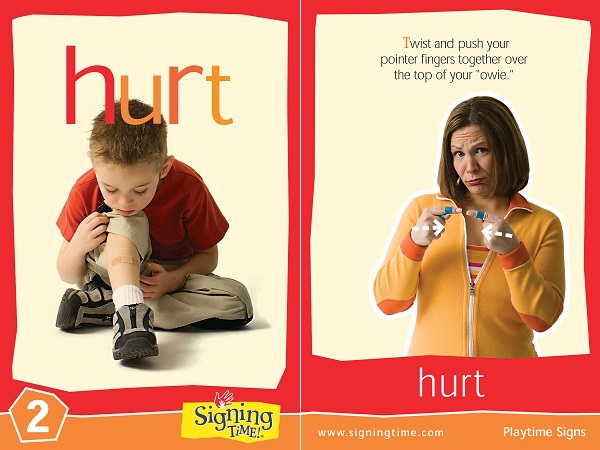Hurt in Sign Language
Learn how to sign hurt in ASL (American Sign Language). Use of this sign helps both with empathy and mystery boo-boos!
- Start with pointer fingers facing one another, with the rest of the fingers tucked into the palm.
- You can tap the pointer fingertips together a few times, or alternately, you can twist them.
- This is a locational sign – you show the hurt wherever it actually hurts! So if your head hurts, make the sign over your head. If you tummy hurts, make the sign over your tummy.
Teaching Tips – to learn how to sign hurt in ASL
- Signing with babies is extremely helpful if they can’t quite use the words but are able to produce the sign. If your child takes a spill or seems in pain, sign “where hurt?” and encourage your child to show you the place with sign. A finger twist near the head is much easier than saying, “My head hurts!” and can serve as a nice bridge for communication.
- Teach the sign for hurt with a doll or stuffed animal! Put a few Band-Aids on a play friend, point to them, and sign hurt. Encourage your child to kiss and comfort the toy too.
a. Tip: Band-aides do not always come off furry friends very well! Only do this on a stuffed animal that you don’t mind having a permanent band-aide, or on a doll with plastic parts where the bandage will be more easily removable.
Transcript:
You point one finger at the other, or you can twist them. You can show where you are hurt. My head hurts! Where do you hurt? My tummy hurts. Where is your owie? Mine’s on my elbow. Now it’s your turn
Download the Flashcard (click on the image. Print in color or black-and-white and adjust the print size according to your needs.)

